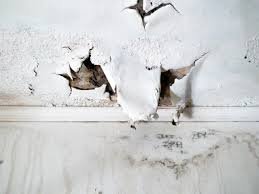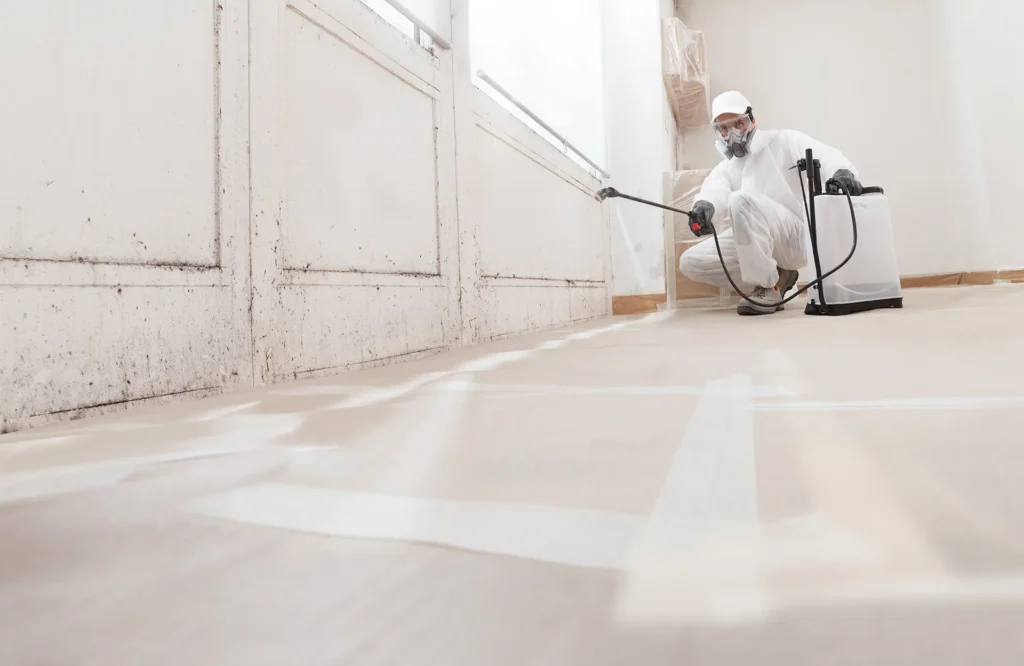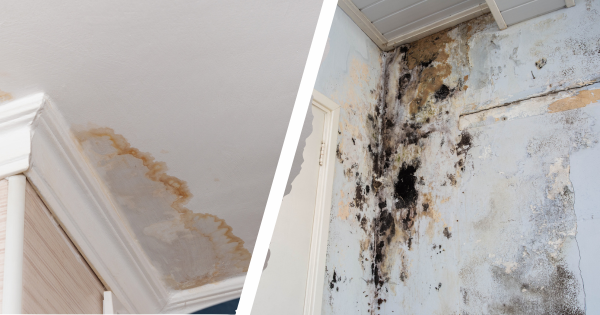Introduction
Water damage is stressful enough, but when mold enters the picture, that’s a whole different nightmare. If you’ve ever dealt with a leaky roof, burst pipe, or flooding in your Plano, TX home, you know how quickly things can spiral out of control.
Here’s the good news: with the right steps and proper timing, you can stop mold before it takes over. In this detailed guide, we’ll share the exact tips the pros use, straight from the team at Water Damage Restoration Plano.
The Perfect Storm: How Water Damage Leads to Mold Growth

Moisture and Warmth Create Mold Growth
Mold thrives in moist, warm environments. When water damage happens, whether from a storm, broken appliance, or plumbing issue, it creates the perfect breeding ground for mold spores to spread. For more on this, check our in-depth Mold Remediation Guide.
The Mold Timeline: How Fast Does It Grow?
Believe it or not, mold can start growing in as little as 24 to 48 hours after water exposure. That’s why fast action is crucial. The moment water soaks into materials, the clock begins ticking, and the environment becomes ideal for mold to develop. Learn more about How Long Mold Remediation Takes.
Step-by-Step Guide to Preventing Mold After Water Damage
Step 1: Act Fast – Time is Not Your Friend
As soon as you notice water damage, jump into action immediately. Delaying even a few hours can give mold the head start it needs. Quick action limits how deep moisture penetrates into floors, walls, and furniture.
Step 2: Shut Off the Water Source
Locate and stop the source of the problem, whether it’s a leaking pipe, broken appliance, or roof leak. This prevents further damage while you start the cleanup process.
Step 3: Remove Standing Water Immediately
Use a wet/dry vacuum, mop, or towels to soak up standing water. Never let water sit on surfaces, as it can seep into porous materials and cause long-term structural damage. If flooding is extensive, consider calling professionals to extract water quickly and safely. Visit our Flood Restoration Guide to understand how experts handle large-scale water removal.
Step 4: Dry Everything Out Completely
Use fans, heaters, and dehumidifiers to eliminate excess moisture. Position fans to circulate air and reduce humidity levels. A dehumidifier is particularly useful in humid climates like Plano, TX. If the weather permits, open windows to allow natural ventilation, which speeds up the drying process.
Step 5: Dispose of Water-Damaged Items
Unfortunately, not every item can be salvaged. Carpets, drywall, and mattresses that have been soaked for long periods should be discarded. Mold can easily cling to these porous materials, making them unsafe to keep.
Step 6: Clean and Disinfect All Surfaces
Once the affected area is dry, clean it thoroughly with disinfectants or antimicrobial solutions. Use specialized mold-prevention cleaners to kill any remaining spores and prevent future growth. Focus especially on baseboards, floors, and wall corners.
Step 7: Check Hidden and Hard-to-Reach Areas
Inspect behind walls, under flooring, and inside crawl spaces. Mold thrives in dark, damp spaces that often go unnoticed. Using a moisture meter can help detect wet spots before they become a bigger problem.
Professional Mold Prevention Services: Are They Worth It?

When DIY Isn’t Enough
While many homeowners prefer to handle cleanup themselves, professional mold prevention services offer thorough inspection and advanced moisture removal. If your home has extensive water damage or you’re dealing with contaminated water (like sewage backups), hiring experts is the safest choice.
Benefits of Hiring Experts Like Water Damage Restoration Plano
At Water Damage Restoration Plano, professionals use industrial-grade equipment such as infrared cameras, high-capacity dehumidifiers, and air scrubbers. These tools identify and remove hidden moisture deep inside walls and flooring, ensuring that mold never has the chance to return. Their services not only protect your home but also save you from costly repairs in the future.
Mold Hotspots in Your Plano Home
Basements and Crawl Spaces
These areas often have poor airflow and high humidity, making them prime locations for mold to grow. Regular inspections and dehumidifiers can help prevent buildup.
Bathrooms and Kitchens
These spaces are frequently exposed to water from showers, sinks, and appliances. Even small leaks under sinks or around tiles can lead to significant mold growth if ignored.
Attics and Roof Leaks
When roofs leak, moisture can accumulate in attics, leading to hidden mold growth. Inspect your roof regularly for damage, and ensure your attic is well-ventilated to reduce humidity.
Signs You Might Already Have Mold
Musty or Earthy Odors
A persistent musty smell, especially in damp areas like basements or bathrooms, is one of the first signs of mold growth.
Visible Spots or Discoloration
If you see black, green, or white fuzzy patches on walls, ceilings, or floors, it’s a clear indication that mold has begun to spread. Learn more about Warning Signs of Mold in Your Home.
Health Symptoms
Mold exposure can trigger allergies, asthma, and respiratory issues. Common symptoms include coughing, sneezing, watery eyes, and headaches. If these symptoms worsen indoors, mold might be the cause.
Why Plano’s Climate Makes Mold a Risk
Plano’s weather creates the perfect mix of heat and humidity for mold to thrive. Hot summers, occasional heavy rainfall, and flash floods mean homes often experience moisture buildup. Without proper ventilation and moisture control, mold growth becomes inevitable. Homeowners in Plano should remain proactive year-round to avoid this issue. For more prevention tips, visit Prevent Future Flood Damage After Restoration.
Preventive Maintenance Tips for Plano Homeowners
Regular Plumbing Inspections
Check for leaks under sinks, behind appliances, and around toilets. Fixing small leaks early prevents major water damage later.
Keep Gutters and Downspouts Clean
Clogged gutters can cause rainwater to overflow and seep into your roof or walls. Clean them regularly to prevent roof leaks and structural damage.
Seal Windows and Roofs Properly
Use caulking and weather-stripping to prevent water from entering through small gaps. Sealing these areas also helps maintain energy efficiency.
Maintain Proper Ventilation
Use exhaust fans in bathrooms, kitchens, and laundry rooms to reduce humidity. Air circulation helps moisture evaporate quickly.
Inspect and Service HVAC Systems
Your HVAC system can harbor moisture and spread spores throughout your home. Have it serviced regularly to ensure clean filters and proper airflow.
Choosing the Right Water Damage Restoration Company in Plano
What to Look For
When selecting a company, look for one that offers 24/7 emergency service, local experience, and positive customer reviews. Ensure the company is licensed and insured for your protection.
Why Water Damage Restoration Plano is a Trusted Choice
Water Damage Restoration Plano has served Plano homeowners for years. With fast response times, expert technicians, and a focus on complete mold prevention, they’ve built a reputation for reliable and professional service. Their team understands local weather patterns and common home structures in the area, ensuring accurate and efficient results every time.
Conclusion
Mold is fast-growing, destructive, and hazardous to your health, but you can stop it before it starts. The key is quick action: eliminate moisture, dry thoroughly, and clean effectively. Regular home maintenance and professional inspections can help ensure your home stays safe and mold-free.
If you ever face water damage in your Plano home, don’t wait. Call Water Damage Restoration Plano for immediate assistance. Their skilled technicians will dry your home completely, treat affected areas, and ensure your space remains clean, healthy, and mold-free for the long term.
FAQs
1. Can mold grow in less than 24 hours?
Yes, under humid conditions, mold can start growing within 24 to 48 hours after water exposure.
2. What items should I throw away after water damage?
Porous items like carpet, drywall, cardboard, and mattresses that have absorbed water should be discarded to prevent mold contamination.
3. How can I be sure the mold is completely gone?
Professional remediation includes air quality testing and moisture detection to confirm that mold has been fully removed.
4. Is bleach enough to remove mold?
Bleach only kills surface mold and doesn’t reach deep spores. Use an antimicrobial cleaner designed specifically for mold removal.
5. How can I get emergency help in Plano, TX?
Contact Water Damage Restoration Plano for 24/7 emergency response. Their local team is always ready to respond quickly and restore your home to a safe, dry condition.

